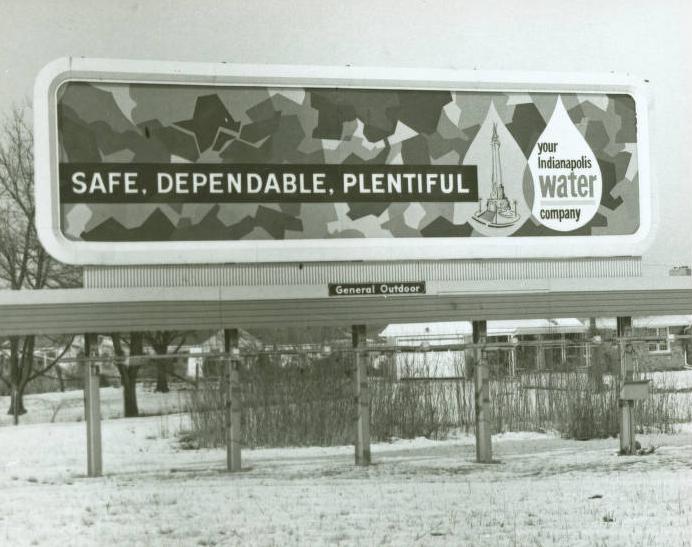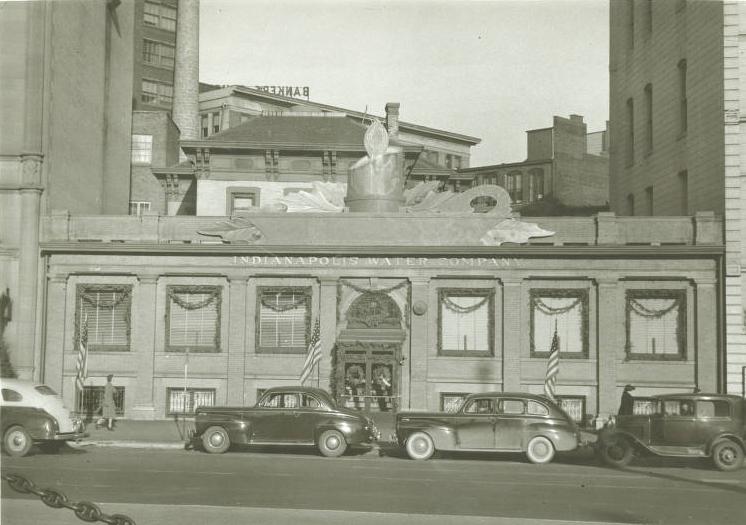The Water Works Company of Indianapolis, the predecessor to the Indianapolis Water Company, began operation on June 1, 1871. The company was incorporated by James O. Woodruff of Rochester, New York, also the founder of . Water Works used the Indianapolis Division of the as a power source to drive the pumps of its Washington Street station, but after about a decade in business, the company ran out of funds and was forced to sell.

In April 1881, a group of local businessmen purchased the Water Works Company of Indianapolis and formed the Indianapolis Water Company. The company soon began to identify and use additional water sources other than its wells near Washington Street. In 1904, the company placed its White River Station Treatment Plant into operation. That facility, located east of near 16th Street, obtained its water supply from the river at via the old Central Canal.
The water company’s first president was Thomas Armstrong Morris, a civil engineer who settled in Indianapolis in 1821 with his father, . He led the construction of the Riverside pumping station north of Fall Creek and the sand filtration beds at the White River Station near the canal aqueduct in the 1890s, making Indianapolis one of the first large cities to treat its water.

The company remained in local hands until 1912 when it was purchased by Clarence H. Geist, a Philadelphia-based utility investor who controlled electric, gas, and water utilities across the nation in the 1920s. During his 26-year ownership, the water company erected Fall Creek Station in 1915. Located northeast of downtown on Fall Creek near the Keystone Avenue bridge, the station obtained its water supply from the creek. As early as the 1920s, the company developed plans for a reservoir upstream from the treatment plant to ensure a dependable supply of water even in drought years.
Howard S. (“Scotty”) Morse’s tenure as general manager and chairman (1925-1949, 1953- 1961) produced great gains for the company, including the construction of , completed and filled in 1943. In the 1950s, the White River Station Treatment Plant was greatly enlarged, more than doubling its capacity. Additionally, , located near Noblesville in , was completed in 1956, becoming an integral part of the metropolitan area’s water supply.

Following the flooding of 1958, the City of Indianapolis constructed a flood-control and water-supply reservoir on Eagle Creek in northwestern Marion County (completed in 1968). Through its Eagle Creek Station, now the Thomas W. Moses Station, completed in 1976, the IWC supplied customers in the northwestern part of its system. In December 1976, the company deeded the canal south of 20th Street and the Washington Street Station to the city. This corridor became the focal point for residential and commercial development as well as the development of the .
Attorney came to Indianapolis in 1956 to manage IWC for the Dallas-based Murchison family, which had purchased control of the utility. Following transfers by the Murchisons to Philadelphia in 1959 and later Minneapolis, Moses returned to Indianapolis as chairman and president of the Indianapolis Water Company in 1970.
Shortly afterward, plans for the city and IWC to build a reservoir in northeast Marion County were shelved in favor of a proposed joint U.S. Corps of Engineers-State of Indiana project known as Highland Reservoir. The Indiana General Assembly authorized this project, but the U.S. Congress did not. The demise of the Highland project made it evident that the maximum use of existing sources along with the development of groundwater supplies was needed to ensure adequate supplies in the future.
New high-capacity wells in both the Fall Creek Valley and the southern part of the county added to the supplies available in 1989. The new White River North Station came online in 1991 to serve northern Marion and southern Hamilton counties, however, in June 1992, severe wind and a rainstorm caused a breach in the water company’s canal wall near the Michigan Road bridge. This cut off water to a large portion of the city’s population, indicating how dependent the city was on the for its water supply.
Through the 1990s, the company maintained eight booster pumping stations to distribute water to city residents through more than 2,500 miles of water mains. Water use averaged approximately 120 MGD (or 43 billion gallons annually), the utility was capable of providing an average of 140 MGD with its facilities.
In 2002, the city of Indianapolis purchased Indianapolis Water Company for $515 million, changing the name to Indianapolis Water. The city hired a subsidiary of Veolia, to manage the utility under a 20-year contract. Veolia’s tenure managing Indianapolis Water was fraught with issues. Both customer service and water quality declined, with Indianapolis water quality ranking among the lowest of the largest U.S. cities. Between this and Indianapolis’ declining water utility infrastructure, the city sold Indianapolis Water in 2011 to Citizens Energy Group, which took control of Indianapolis’ water and wastewater utilities. Veolia’s contract was terminated at a cost of $29 million.

Help improve this entry
Contribute information, offer corrections, suggest images.
You can also recommend new entries related to this topic.